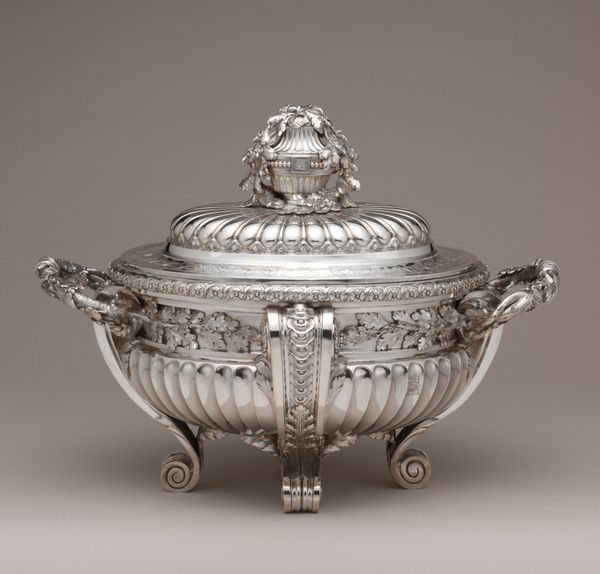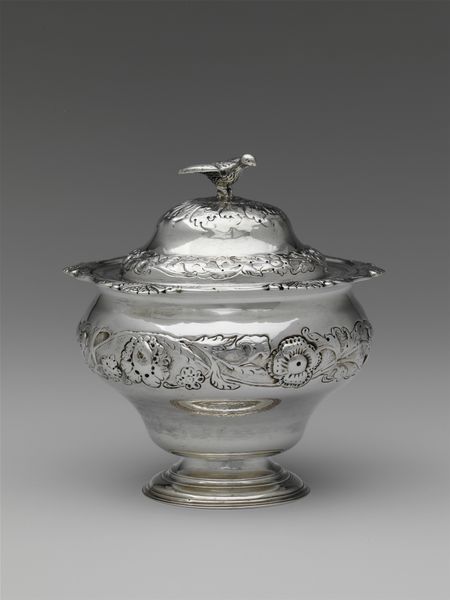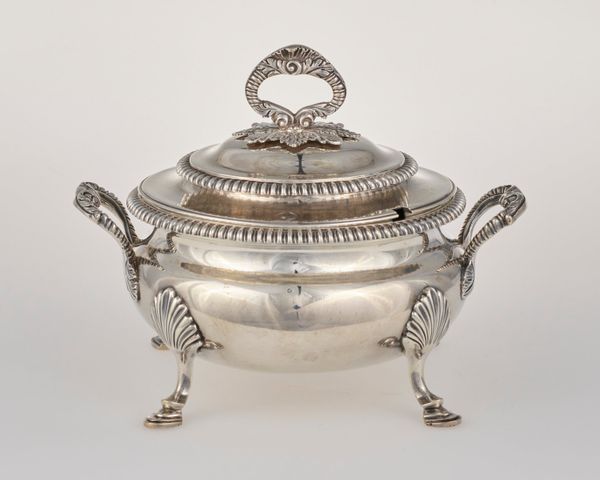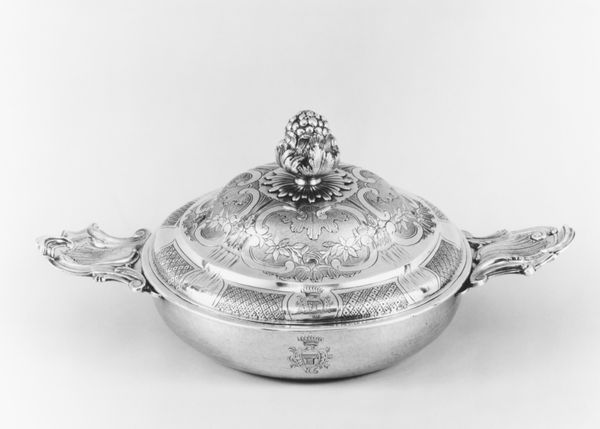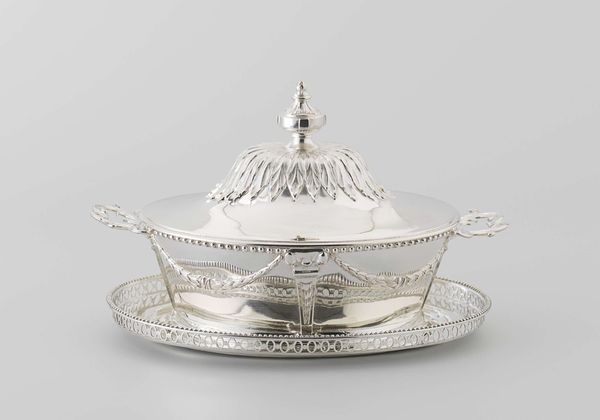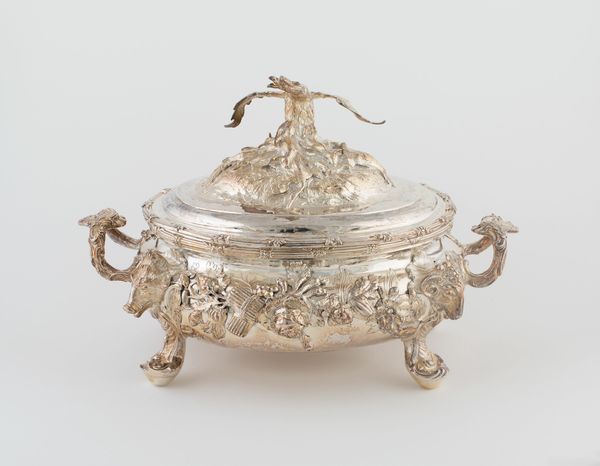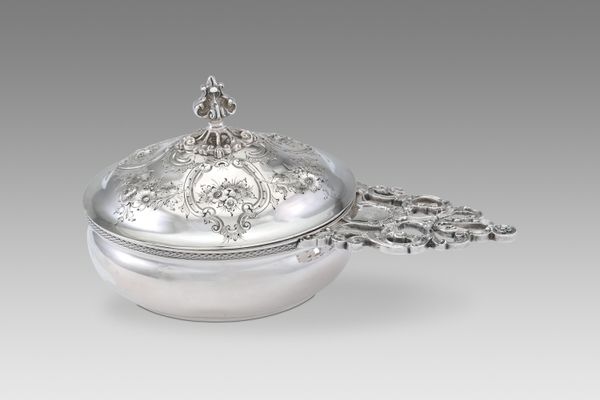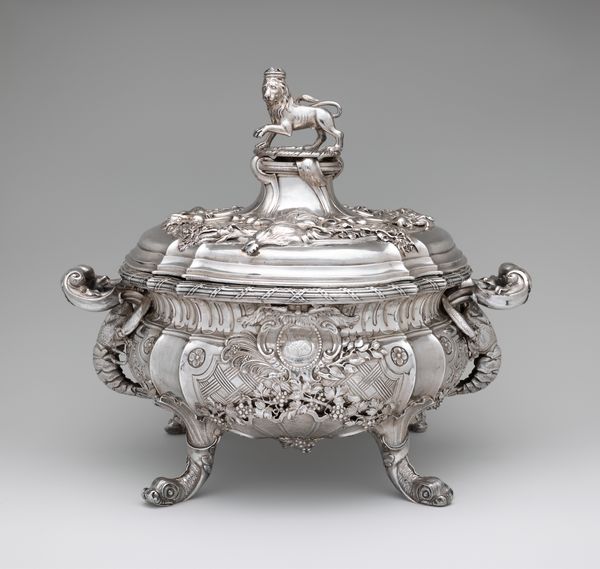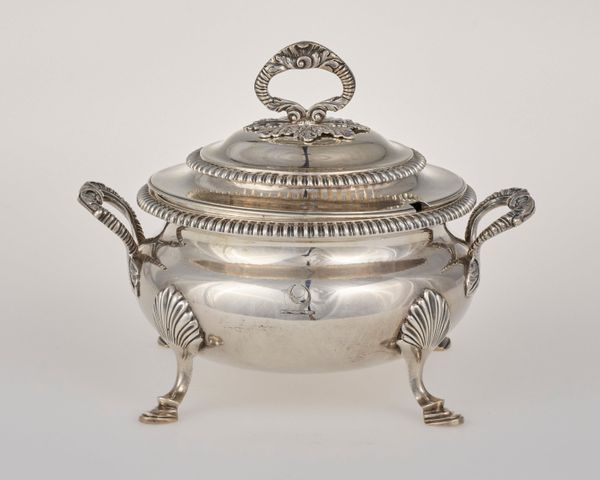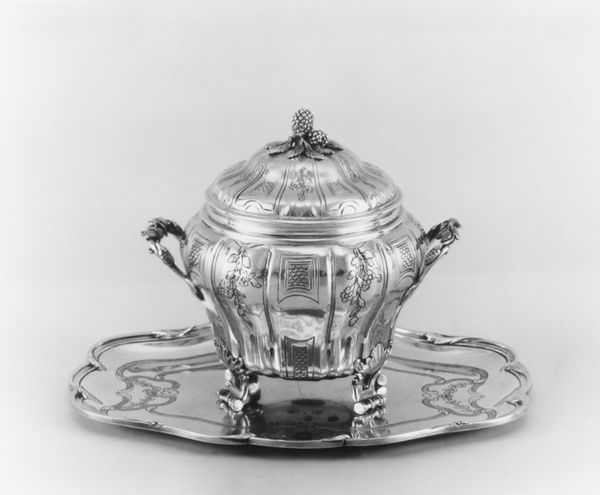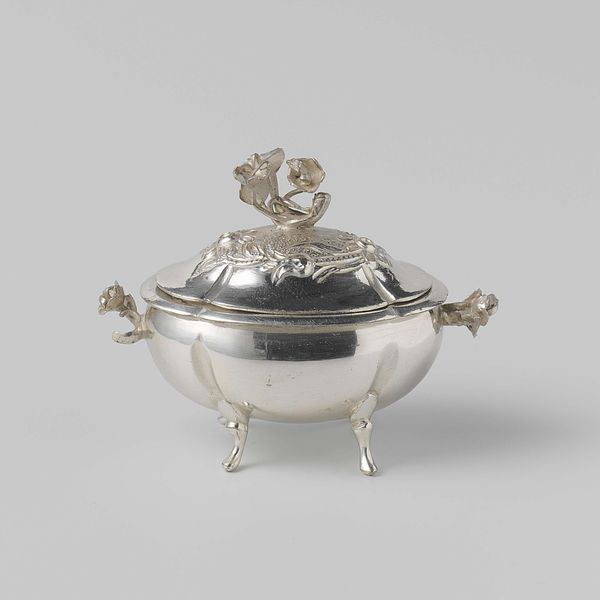
Broth bowl with cover and matching stand (écuelle) 1774
0:00
0:00
Dimensions: Covered Broth Bowl: 4 3/4 × 7 × 11 5/8 in., 37.492oz. (12.1 × 17.8 × 29.5 cm, 1063g) Wt: tureen only: 562g; Wt. cover only: 501g Stand: 9 3/4 in., 18.134oz. (24.8 cm, 514.148g)
Copyright: Public Domain
Curator: Just lovely! The first word that comes to mind is 'opulence.' What a beautifully crafted object. Editor: Indeed. What we have here is an écuelle, or broth bowl, with cover and matching stand, dating back to 1774. It's currently held in the collection of the Metropolitan Museum of Art. Curator: An écuelle! Meant for something as simple as broth, and yet rendered in such painstaking detail, the silver gleaming, the chased decorations. I wonder about the silversmith's process here, the labor involved. Editor: Absolutely. Silverwork like this signals a society defined by elaborate dining rituals and, frankly, a marked social hierarchy. Owning an object like this broadcasted your position within the social and economic order of the time. Curator: It really prompts questions about value. Is its worth tied to its functionality? Or, in this case, to the immense resources–materials and human skill–poured into its creation? Look at the handles, elaborately wrought. This wasn't just stamped out. It took a skilled hand. Editor: Right, the artist, Louis Landes. Think about the context in which this was crafted: pre-revolutionary France. This speaks volumes about wealth distribution and the role decorative arts played in upholding societal structures. Who commissioned this, and at what cost to their wider community? Curator: It’s fascinating how something designed for such intimate use - individual consumption - became such a potent symbol of social power. Did this ever actually cradle broth, or was it more about display, and social performance? Editor: Perhaps a bit of both. Its value would also fluctuate across historical eras and various art markets. A piece's journey from artisan's workshop to the Met is also shaped by galleries, collectors, and curators - individuals whose tastes and valuations further influence an objects trajectory through history. Curator: Right. It makes me want to delve into Landes's other commissions, understand the workshop environment. To really dig into the societal networks facilitated and perpetuated by such pieces. Editor: Me too. Thinking about this piece encourages one to remember that artifacts don't merely exist, they perform. The act of seeing this evokes history, class and societal structure from the gilded Rococo period.
Comments
No comments
Be the first to comment and join the conversation on the ultimate creative platform.
